Two Books Once Owned by Herman Melville Come to Swann
Even if you’ve never read Moby Dick, you have no doubt heard of Herman Melville and his literary masterpiece. August 2019 marked the author’s bicentennial.
Featured in our October 10 auction of Fine Books & Manuscripts was a rare look at the author’s personal library, as we offer two volumes of Greek & Roman classics owned and annotated by Melville. Possibly the most interesting revelation from the volumes is that the author brought them shipboard on an 1860 New York–to–San Francisco trip aboard the Meteor. From his letters we know that Melville occupied his time during the long trip with the study of poetry, and the marginalia found within the volumes provides a more complete understanding of the author and the poetic literature that became the focus of his later works.
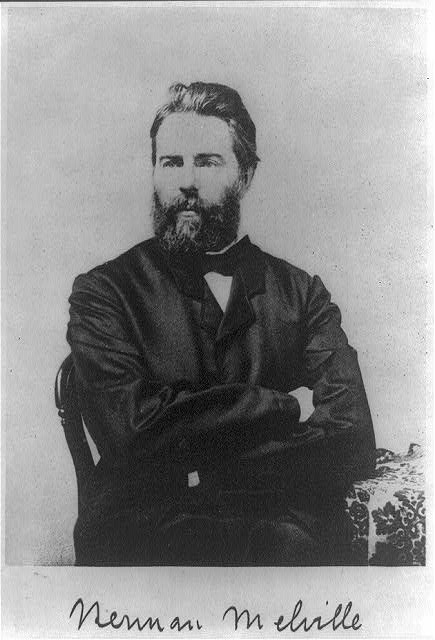
“I know not all that may be coming, but be it what it will, I’ll go to it laughing.“
Herman Melville, Moby Dick
Melville purchased books often: sometimes from bookshops, sometimes from auctions; he sought them out while traveling or while at home in New York. He also bought books at a discount from his publishers. Recorded in an account statement from Harper and Brothers is Melville’s purchase of a 37-volume set of classics on March 19, 1849. After completing school, Melville’s primary source for the study of Greek and Roman literature was this Harper’s Classical Library. There are only two volumes from this set known to have survived to the present day: the 17th volume, which contained works by Euripides; and the 35th volume, which contained works by Juvenal (and Samuel Johnson). These are the volumes being offered on October 10.
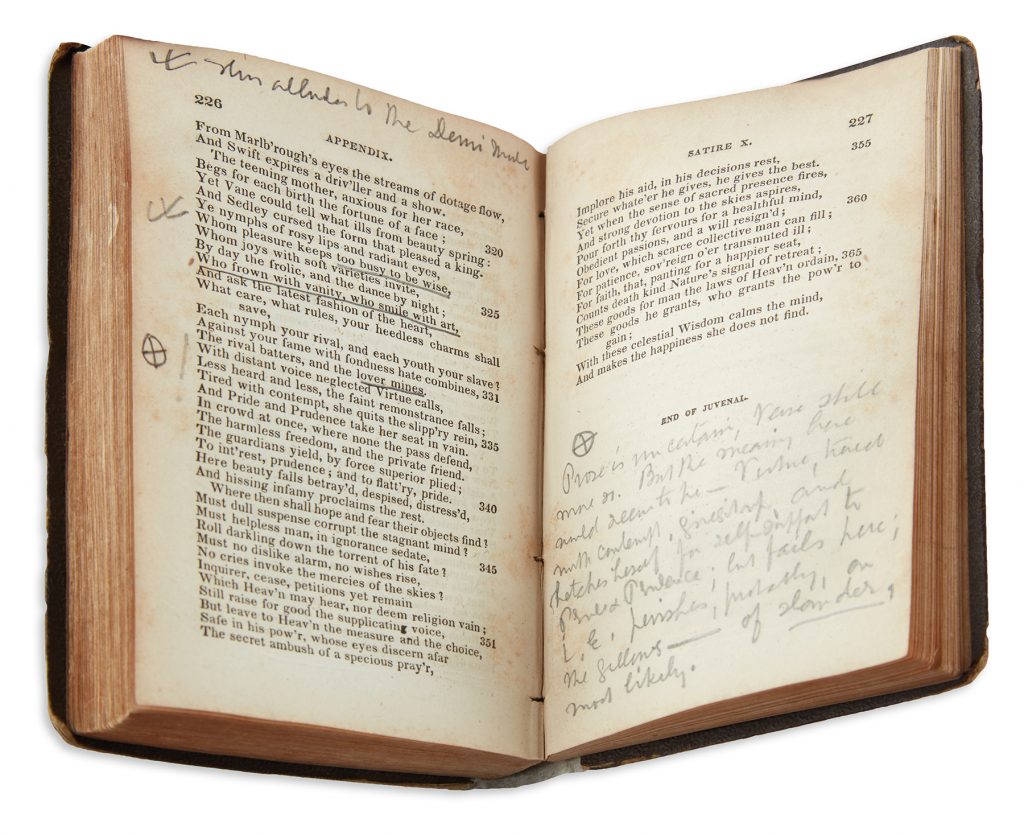
Pictured here is Melville’s commentary on Samuel Johnson’s
The Vanity of Human Wishes, an imitation of the Tenth Satire in Juvenal, which reads:
“Prose is uncertain, verse still more so. But the meaning here would seem to be—Virtue, tired with contempt, gives it up, and latches herself for self-support to Pride & Prudence; but fails here; i.e., perishes, probably, on the gallows—of slander, most likely.”
Melville wrote his name and address in the Juvenal volume, as well as brief notes throughout; he marked both volumes with numerous underlines, checkmarks and vertical bars in the margins. Although they were available to him while he wrote his masterwork, Moby Dick, it is unlikely that Melville did much reading or annotation in them at the time. At least some of the annotations, however, were made during his 1860 trip aboard the Meteor, which sailed from New York in May, reached Chile’s Cape Horn in August, and arrived in San Francisco in October. In letters and journal entries, Melville mentioned the small library he brought with him on this trip, the volumes of which he marked with the name of a place along the route and sometimes also a date—presumably reminders of where he was at the time of reading. The Juvenal and Euripides volumes are marked in this manner, each signifying Cape Horn: “C.H.” or “C. Horn.” Melville occupied his time during the long trip engaged in the study of poetry, an experience that likely influenced the poetic works that became the focus of the remainder of his literary output.
In 1863, when Herman Melville moved to 104 East 26th Street in New York City, the Juvenal and Euripides volumes likely followed him with the rest of his library. Melville gave his attention to the Juvenal volume around 1866, or sometime thereafter, since he made a telling annotation in the upper margin of a poem by Samuel Johnson: “Mexican Max[i]milian / Louis Napoleon / &c &c &c.” Archduke Maximilian, with the support of Napoléon III, declared himself Emperor of Mexico in 1864, but local opposition brought his reign to an end in 1866-67. Melville’s note is likely making a comparison to the theme of Johnson’s poem, which is the vain and doomed attempt of Charles XII of Sweden to conquer Russia.
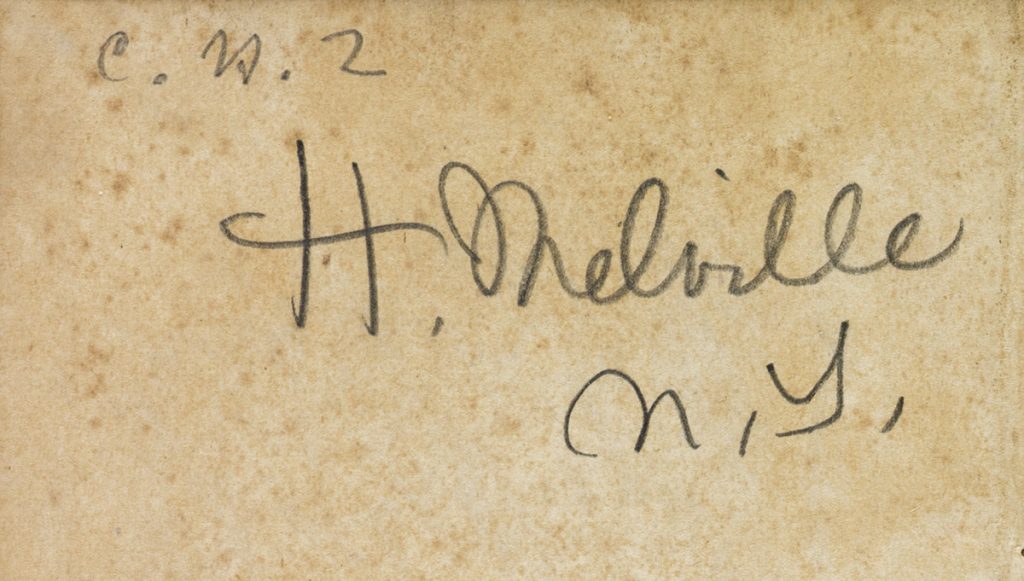
Also in 1866, Melville took up the work of inspector at the customs office at 470 West Street in what is known today as the Meatpacking District, where he worked for 19 years. It is possible that some of his books, including the Juvenal and Euripides volumes, were kept handy at the customs office, for stolen moments of literary escape. If so, the volumes had not traveled far after the 1860 trip, since they were discovered in the same neighborhood over a century later.
Because Melville was not widely recognized in his time, autograph material by the author is scarce, though his personal library has been extensively studied. The definitive source for information on Melville’s library and literary influences is Melville’s Marginalia Online, “a virtual archive of books owned and borrowed by American author Herman Melville.”
Herman Melville Bicentennial: Further Reading
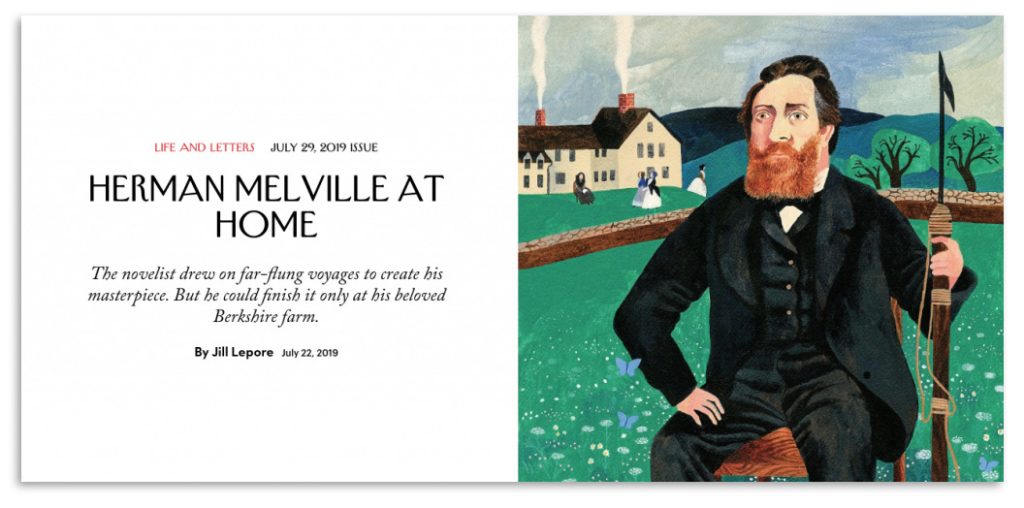
Illustration by Carson Ellis
Jill Lepore’s recent New Yorker article touches on Melville’s journey to finish the great American novel at his Berkshire farm.
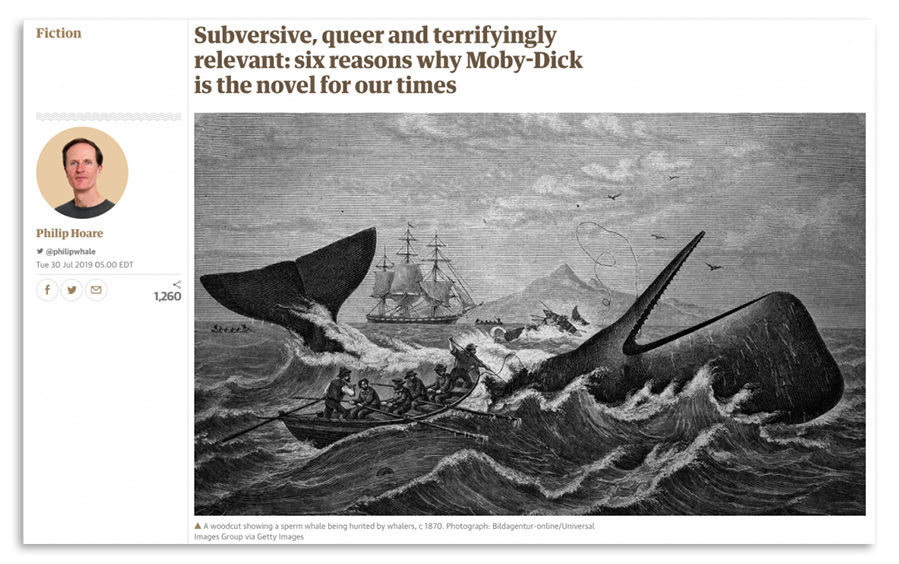
Philip Hoare’s Guardian article discussing six reasons Moby Dick is still relevant today.
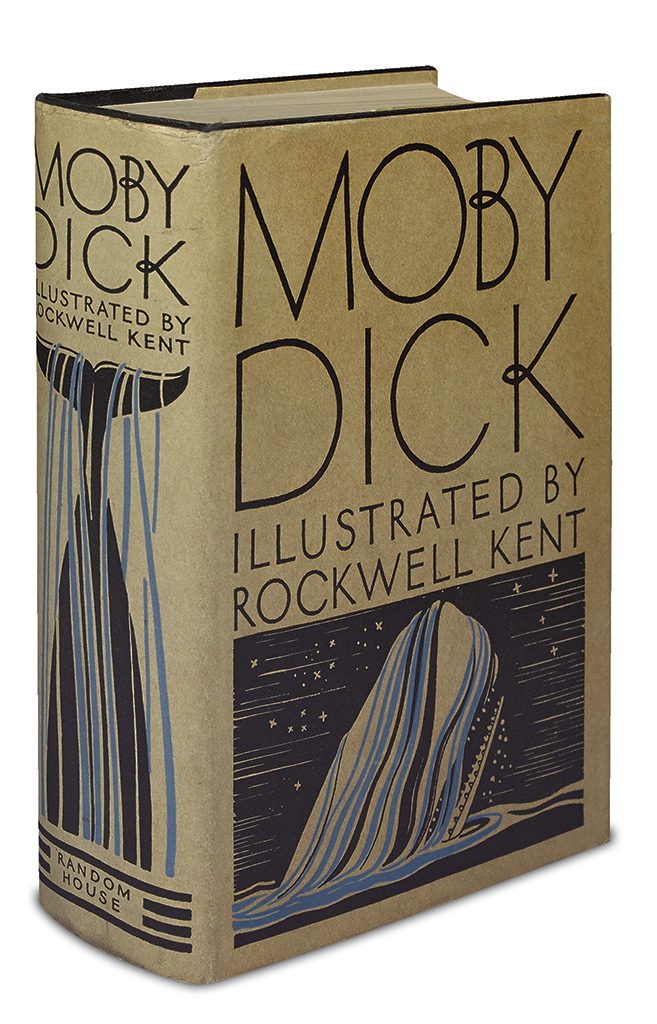
The novel itself! There’s no day like today to start reading or rereading Melville’s classic. Pick up a fresh paperback at your local indie, buy a well-loved copy from your favorite purveyor of used books, or borrow it from the library.
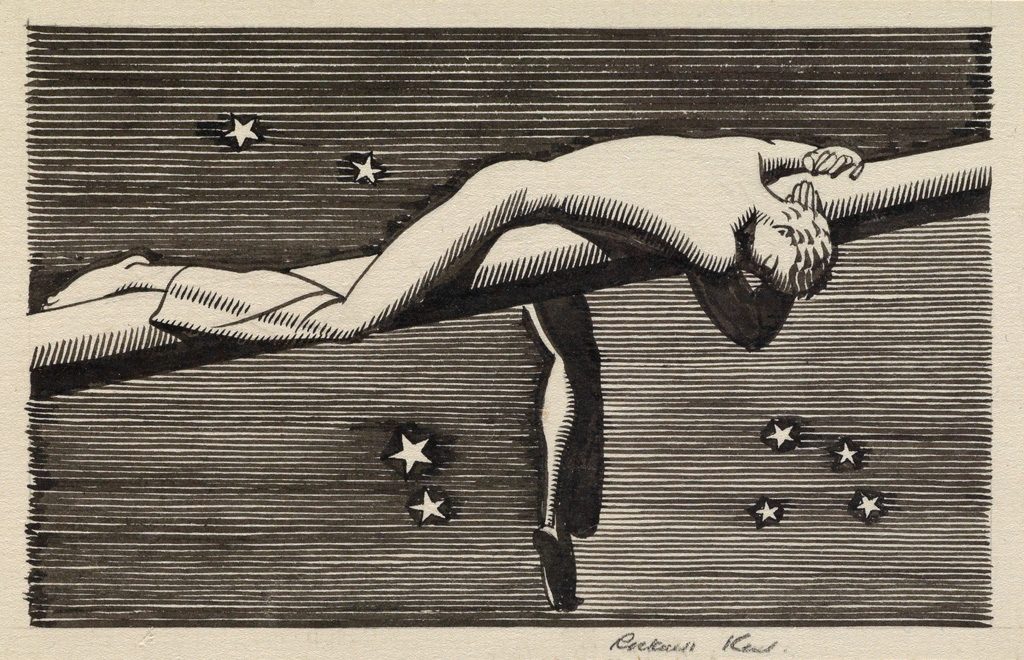
Collecting Melville & The Great White Whale
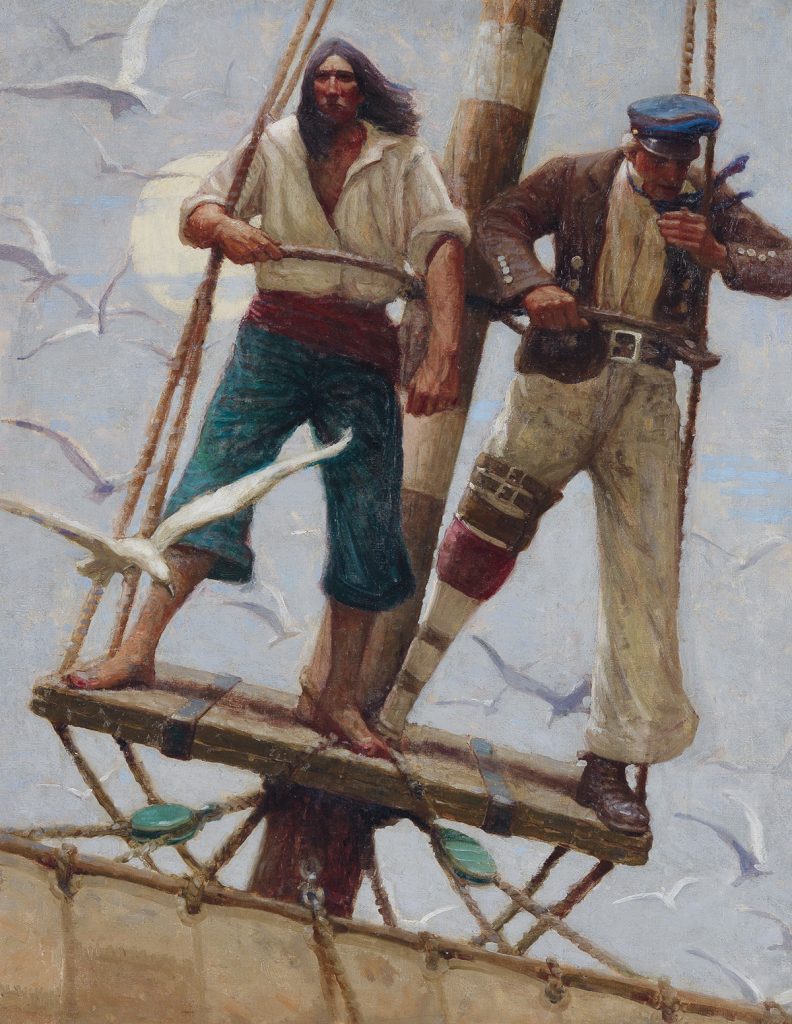
In our June 2019 sale of Illustration Art, Swann sold Mead Schaeffer’s frontispiece and dust jacket design for the 1922 reissue of Moby Dick for $50,000. Dodd and Mead’s edition of the classic, with its memorable, dramatic cover, helped popularize the posthumous twentieth-century revival of interest in Melville.
First editions of Melville’s best-known work are highly collectible, and have sold at Swann for up to $74,000. Considered a commercial failure in its time, the plates and remaining copies for the first American edition of Moby Dick (published 1851) were destroyed in a fire in 1853. Melville, on his book: “It is the horrible texture of a fabric that should be woven of ship’s cables and hawsers. A Polar wind blows through it, and birds of prey hover over it.”
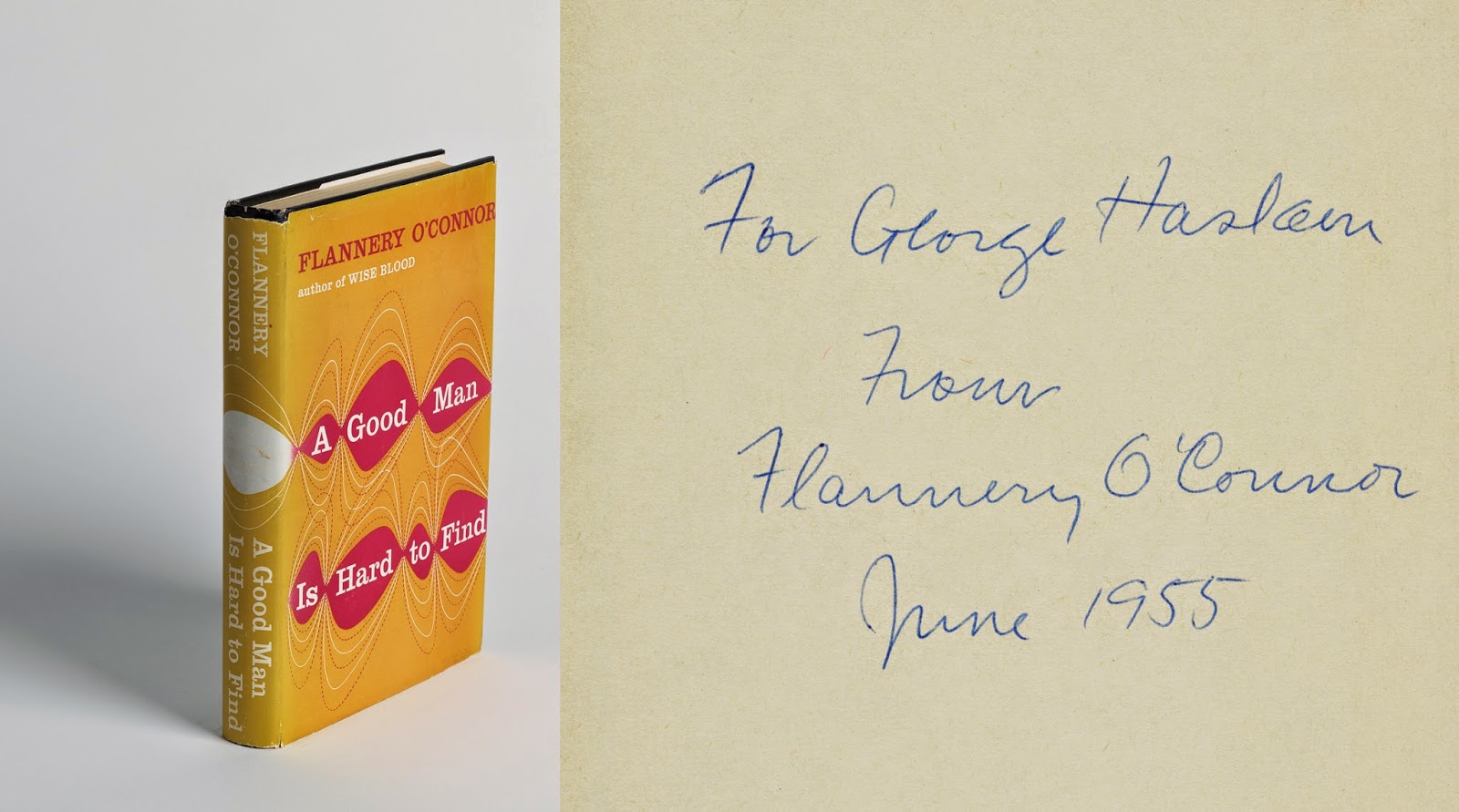









![Grace Meschery-McCormack shares about two copies of Fernando de Rojas’s ‘La Célestine,’ including a limited edition copy illustrated by Pablo Picasso.
At auction April 22. Learn more about the works at the link in our bio.
#Rarebooks #rarebookdealer #antiquarianbooks #auctions
_______________________________________
Music Credit:
Schubert - Piano Quintet in A major ‘The Trout’, D. 667 - IV. Andantino – Allegretto
Music provided by Classical Music Copyright Free on Youtube [https://tinyurl.com/visit-cmcf]
Watch: • Schubert - Piano Quintet in A major ‘...]](https://scontent-iad3-1.cdninstagram.com/v/t51.75761-15/491443494_18499096345036585_5935932878956098058_n.jpg?stp=dst-jpg_e35_tt6&_nc_cat=107&ccb=1-7&_nc_sid=18de74&_nc_ohc=AZ-awqelOZgQ7kNvwFA19hE&_nc_oc=AdkZVODYB5VxTPck7kaEV8QTzHwvQLzaAjo_r9W39mgpTAk2Ix_Bp7bj2bTOpAdxWZY&_nc_zt=23&_nc_ht=scontent-iad3-1.cdninstagram.com&edm=AM6HXa8EAAAA&_nc_gid=RjO-AL8wJB4OsYpWPreXeg&oh=00_AfFe71cdy3TwSfMQhSbjRwO5nQS1iO9djdj-EPTpnGtE0g&oe=680E6091)







